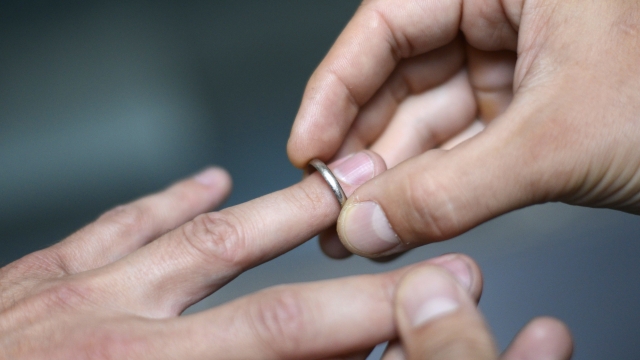Vaginas are magical, mystical parts of the human body that have, for a long time, gone unnoticed. But whether you’re celebrating the ban against female genital mutilation (like in Gambia, here, or Nigeria, here) or just really happy that you’re a PVO (Proud Vagina Owner), we’d like to make sure you’re doing everything just perfect so that your vagina stays happy.

The Vulva
This is the true name for the part of the body that most women mistakenly call “the vagina”. The vulva is actually just the external part of the vagina. It’s not a specific part, in and of itself, but it’s a collective name for the area that contains the mons pubis, the labia (the outer labia, or labia majora, and the inner labia, or labia minora. We’ll get into that in just a minute.
The Mons Pubis
The mons doesn’t get a lot of attention – at least not in talking. Truthfully, the mons pubis is made up of the two halves of the labia majora. Its name literally means “pubic mound” – and it’s not hard to see why. This region is often rounded, especially for larger vagina-owners, and its general purpose is protection – not sexual gratification. (But that’s not to say that rubbing and kissing on it is a bad idea – hint hint!)
The Labia
The labia, or the “lips” of the vagina, is composed of two pairs of lip-like skin-flaps. (That’s definitely not a very sexy way to put it!) Your outer labia (or labia majora) will grow pubic hair, but your inner labia (or labia minora) will not. These flaps of skin are responsible for helping keep debris away from the more sensitive parts of your vagina. Shaving the hair in this region is largely a matter of personal preference, but the hair actually is there to serve a purpose, and shaving it off sets you up for infections and other unsavory results. If you’re really concerned with how bushy it is (hint: you shouldn’t be!) consider trimming the hair with scissors, as opposed to shaving it completely off. Trust me, it’s much healthier for your vagina that way, and your partner should understand you prioritizing your health. (If he or she doesn’t, kick them to the curb – your sexual health is way more important than their sexual gratification.)
The Hymen
The hymen is a small membrane inside the vagina. For a very, very long time, it was considered a sign of virginity – but as our sexual awareness became greater, we’ve learned that there are other things that can affect the hymen besides just penetrative sex. Horseback riding, tampon use, and some falls can break this thin membrane. Additionally, a hymen owner can have non-penetrative sex their first time, which makes them not a virgin – but with an intact hymen. (In theory, of course. Most of the time, the hymen will be broken by some act.) This small bit of skin is the part that we think of bleeding during your first penetrative sexual experience. (Sorry to disappoint the guys who might be reading this, who thought it was your huge girthy penis that made her bleed. It wasn’t.)
The Vagina
The actual vagina is just the canal that connects the vulva to the cervix. (Personally, I often refer to the entire tube as “the cervix”, but that’s not really correct, either.) This is the part of your body where a tampon will lie, if you choose to use tampons. We often hear of a “tight” or “loose” vagina – but there’s something you should know. The vagina is a muscular tube; it expands and contracts based on stimulation. A non-aroused vagina is about three inches long and less than an inch around. If it seems like there’s more room in there, that’s because the vaginal walls are folded to allow it to expand – several more inches in length can be “added”, and many inches in width as well. The vagina also produces a fluid that not only helps to lubricate for sexual activity, but also works to clean and prevent bacteria and yeast growth. This fluid is a type of mucus, very similar to saliva, but often much thicker.
The Cervix
The cervix is a part of the vagina that most people don’t really come into contact with, aside from when they’re born. This part of the vagina is often called the “birth canal”, because it’s really just a tube that leads from the uterus to the vaginal canal, and helps to push the baby through during childbirth. Some women may enjoy deep penetrative sex that reaches to the cervix, but for most women, this is incredibly uncomfortable. This isn’t a very long tube, though – it is about 1/3 of the uterus and basically only exists as a “guide rail” to help things move into or out of the uterus as necessary.
The Clitoris
Most lesbians are pretty well-versed in where the clitoris is. (It’s often called just the “clit” – this is not considered incorrect, just informal.) The clitoris is a sensitive bit of tissue that’s responsible for very intense, but often shallow, orgasms. The entire clitoris is about the size of a soybean, but you can’t see most of it. For those who are used to handling a penis, the clitoris is very biologically similar, and responds well to similar stimulation – just remember to be gentle! There are thousands of nerve endings in the clitoris, which is responsible purely for sexual gratification.
The Female Reproductive System, As a Whole
While this area is widely recognized as the female reproductive system, this implies a need to reproduce – and that’s really not its only purpose. Your reproductive system performs a variety of tasks that range from increasing sexual gratification (like the folds in the vagina – these add friction and stimulation to the partner who is penetrating) to lubrication (like the vaginal epithelium) to simply protecting the vagina from injury and infection (yes – I’m talking about the labia and pubic hair here).
If you have a vagina, it is your right and responsibility to be familiar with it. There are many more components to your sexual anatomy than just the ones we’ve covered here, and understanding how they all work together can help demystify the sexual experience for everyone involved. If your partner doesn’t have a vagina and doesn’t know how to properly handle one, let them know! This is your body and you have every right to insist it’s taken care of by your partner. Just make sure you’re doing your part, too.
For more information, please check out the interactive diagram, located here, or simply take the time to get to know your vagina. Feel around and get comfortable! It’s easiest to explore in the comfort and privacy of your own home. Learn what works for you, so that you can better explain to your partner how to please you. (And if you and your partner both own a vagina of your own, you might even be able to surprise her with your new findings!)
[interaction id=”5605774c74a791dd4b03378f”]









